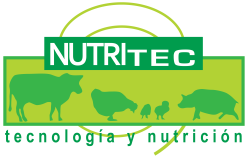African swine fever (ASF) is a highly contagious hemorrhagic viral disease of domestic and wild pigs, which is responsible for severe economic and production losses.
It is caused by a large DNA virus of the family Asfarviridae , which also infects ticks of the genus Ornithodoros.
Although the signs of ASF and CSF may be similar, the ASF virus is not related to the CSF virus.
African swine fever is a disease included in the Terrestrial Animal Health Code of the World Organization for Animal Health (OIE) and must be reported to the OIE.
transmission and propagation
The epidemiology of African swine fever is complex and varies depending on the setting, the types of pig production systems, the presence/absence of competent vector ticks, human behavior, and the presence/absence of feral pigs.
Transmission routes may include:
- direct contact with infected domestic or wild pigs
- indirect contact, through ingestion of contaminated material (for example, food waste, feed or garbage)
- contaminated fomites or biological vectors (soft ticks of the genus Ornithodoros ) when be present.
Public health risk
African swine fever is not a risk to human health.
Clinical signs
Clinical signs and mortality rates may vary depending on the virulence of the virus and the type/species of pig:
acute forms African swine fever are characterized by high fever, depression, anorexia and loss of appetite, skin haemorrhages (reddening of the skin on the ears, abdomen and legs), abortion in gestating sows, cyanosis, vomiting, diarrhea and death in 6 -13 days (or up to 20 days). Mortality rates can reach 100%.
The subacute and chronic forms they are caused by viruses of moderate or low virulence, which produce less intense clinical signs that can be expressed for much longer periods. Mortality rates are lower, but can still range from 30 to 70%. Symptoms of chronic disease include weight loss, intermittent fever, respiratory signs, chronic skin ulcers, and arthritis.
Different types of pigs may have variable susceptibility to ASF virus infection. African wild suids can be infected without showing clinical signs that allow them to act as reservoirs.
Diagnosis
Suspicion of ASF can be based on clinical signs, but confirmation must be done with laboratory tests, especially to differentiate it from classical swine fever (CSF). Guidance on diagnostic tests for African swine fever can be found in the Manual of diagnostic tests and vaccines for terrestrial animals.
Prevention and control
There is currently no approved vaccine for African swine fever.
Prevention in ASF-free countries depends on the implementation of appropriate import policies and biosecurity measures, ensuring that no infected live pigs or pork products are introduced into ASF-free areas. This includes ensuring the proper disposal of food waste from aircraft, ships or vehicles coming from affected countries and monitoring illegal imports of live pigs and pork products from affected countries.
During outbreaks and in affected countries, the control of African swine fever can be difficult and must be adapted to the specific epidemiological situation.
Classic sanitary measures can be used, including early detection and humane killing of animals (with proper disposal of carcasses and waste); thorough cleaning and disinfection; zoning/compartment and movement controls; detailed epidemiological surveillance and investigation; strict biosecurity measures on farms.
As has been observed in Europe and some regions of Asia, the transmission of ASF appears to be highly dependent on the population density of wild boars and their interaction with low-biosecurity swine production systems. Good knowledge and management of the wild boar population and good coordination between Veterinary Services, wildlife and forestry authorities are necessary to successfully prevent and control ASF.
Depending on the epidemiological situation, the involvement of the soft tick vector should also be considered in the control program.




